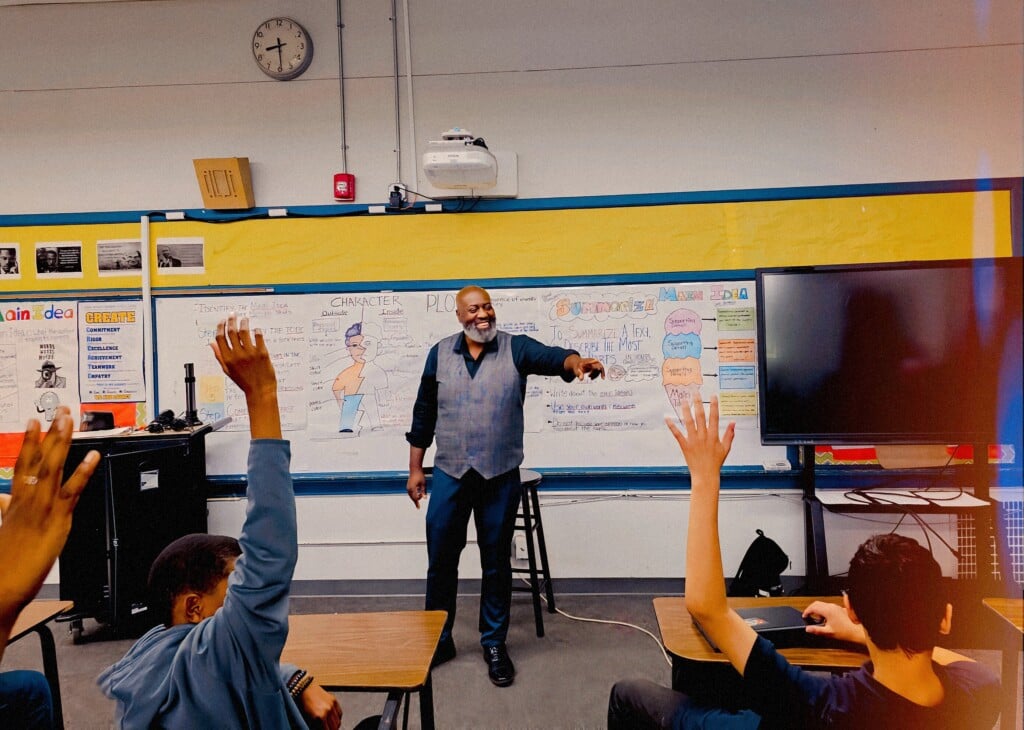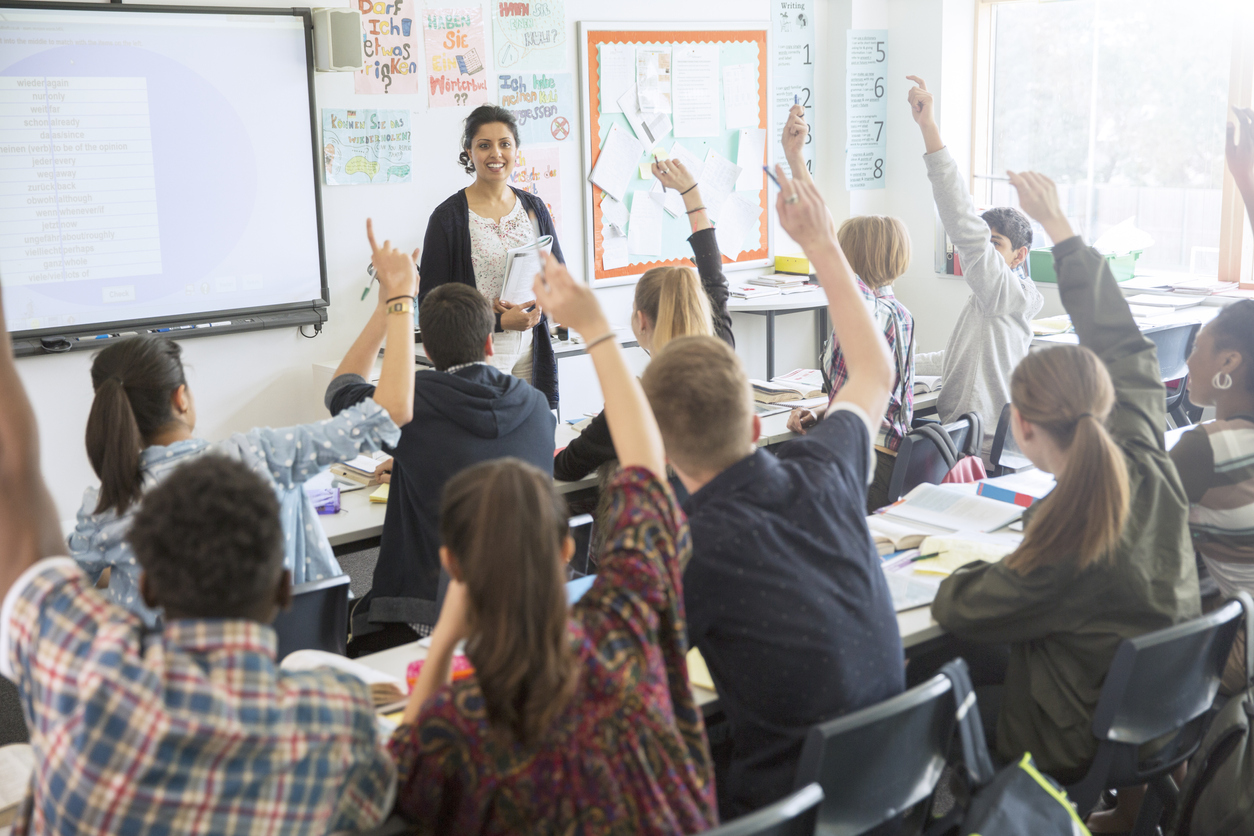Checking Out the Various Teaching Techniques in Primary Science Education And Learning Today
The landscape of main scientific research education is progressing, with various mentor techniques getting importance in contemporary class. Inquiry-based discovering, hands-on experiments, and the integration of technology are redefining just how instructors involve young minds. Furthermore, collaborative strategies and separated guideline are being utilized to deal with the varied demands of students, boosting both interaction and understanding. As we examine these techniques, inquiries arise about their performance and the ramifications for future academic practices. What might these changes in approach mean for the future generation of learners?
Inquiry-Based Understanding
Inquiry-Based Understanding (IBL) is a pedagogical strategy that urges students to check out clinical concepts with wondering about, examination, and hands-on experimentation. This technique highlights the function of students as active participants in their understanding, advertising vital reasoning and analytic skills. By involving with real-world questions, trainees come to be interested and motivated, which enhances their understanding of scientific concepts.
In IBL, teachers serve as facilitators, directing trainees as they browse their queries instead than supplying info directly. This student-centered method enables for differentiation, suiting different learning designs and paces. Students create abilities in developing theories, creating experiments, and examining information, which are essential for scientific literacy.
Furthermore, IBL fosters cooperation amongst trainees, motivating them to share ideas and findings. This collective inquiry promotes social abilities and a feeling of neighborhood within the classroom. Additionally, the process of questions urges strength, as pupils discover to welcome failure as a tipping rock toward understanding.
Hands-On Experiments
Hands-on experiments are an important component of efficient science education and learning, matching the principles of inquiry-based understanding. These experiments enable students to engage straight with scientific concepts, promoting a deeper understanding with experiential learning. By adjusting materials and observing outcomes, young students can comprehend abstract theories in substantial methods.
Such activities promote crucial reasoning and problem-solving abilities, as students hypothesize end results, conduct experiments, and evaluate outcomes. This procedure encourages them to ask concerns, improve their understanding, and establish a clinical way of thinking. Moreover, hands-on experiments can be customized to varied learning styles, making certain that all trainees have the possibility to engage meaningfully with the material.
Additionally, hands-on experiments often motivate partnership amongst peers, advertising synergy and interaction abilities. Operating in teams makes it possible for students to share ideas, talk about searchings for, and find out from each other, which enhances their overall academic experience.
Integrating hands-on experiments right into the primary scientific research curriculum not only enriches the discovering setting however additionally grows a long-lasting rate of interest in scientific research. By actively taking part in their education and learning, trainees are more probable to develop a passion for clinical questions that expands beyond the classroom.

Technology Combination
Incorporating technology right into main scientific research education and learning has actually ended up being increasingly vital in cultivating student involvement and enhancing finding out outcomes. The use of digital tools, such as interactive simulations, virtual laboratories, and academic software program, provides students with possibilities to explore scientific principles in cutting-edge means. These resources facilitate a deeper understanding of intricate subjects by enabling students to imagine and manipulate variables that would be not practical in a standard classroom setting.
Moreover, innovation integration urges individualized discovering experiences. Trainees can advance at their very own speed, revisiting tough principles via multimedia resources, which provide to different understanding designs. This versatility not only sustains individual development but additionally cultivates a sense of freedom in learners.
In addition, innovation serves as a bridge to real-world scientific research, linking students with existing study and professional contributions. Accessibility to clinical journals and on-line databases expands trainees' viewpoints on clinical query and fosters vital thinking skills.
Collaborative Discovering
Collective knowing plays an essential role in primary science education and learning by fostering synergy and communication abilities amongst trainees. This method urges students to function with each other, share knowledge, and participate in problem-solving, which enhances their understanding of scientific principles. By getting involved in group activities, pupils learn to verbalize their concepts, listen to varied perspectives, and bargain options, every one of which are important skills in both scholastic and real-world contexts.

Study indicates that joint knowing can result in increased motivation and engagement in science topics, as trainees discover enjoyment in common experiences (primary science tuition Singapore). Furthermore, this approach prepares pupils for future collective endeavors, furnishing them with the abilities essential for company website reliable synergy in higher education and learning and expert settings. Inevitably, welcoming joint understanding in primary scientific research education and learning can dramatically enrich the discovering experience and promote a deeper understanding of scientific inquiry
Differentiated Guideline

Separated direction can show up in various methods, such as differing the web content, processes, or products of learning. As an example, instructors might make use of tiered tasks that give varying degrees of intricacy, permitting students to operate at their particular readiness levels. Additionally, flexible grouping methods can promote cooperation amongst trainees with various abilities, promoting peer discovering.
Assessment plays a crucial function in this method, as it notifies instruction and aids instructors understand each student's distinct demands. Developmental evaluations, such as tests and monitorings, can assist teachers in readjusting their approaches to improve learning end results. primary science tuition Singapore. Inevitably, by applying differentiated direction in main scientific research education and learning, instructors can cultivate a more efficient and fair discovering atmosphere, empowering all students to reach their complete possibility in recognizing clinical sensations
Final Thought
In recap, the diverse mentor approaches in key science education, consisting of inquiry-based learning, hands-on experiments, technology integration, collaborative discovering, and set apart direction, collectively add to a much more efficient knowing atmosphere. These methods promote vital thinking, analytic abilities, and a much deeper understanding of scientific principles. By implementing these methods, educators can develop encouraging and engaging classrooms that address the varied needs of students, inevitably fostering a lifelong rate of interest in scientific research and enhancing academic success.
Inquiry-Based Learning (IBL) is an instructional strategy that motivates students to explore clinical concepts through doubting, examination, and hands-on trial and error.Joint discovering plays a that site crucial duty in main scientific research education by promoting team effort and interaction abilities among trainees.Research study shows that collaborative understanding can lead to raised motivation and engagement in science subjects, as trainees find enjoyment in common experiences.In promoting a comprehensive knowing atmosphere, separated instruction emerges as an essential technique to suit the varied needs and abilities of students in main science education and learning. Inevitably, by applying separated direction in main scientific research education and learning, teachers can grow a much more reliable and fair discovering environment, empowering all pupils to reach their full capacity in recognizing scientific phenomena.